| Back to Back Issues Page | |||
 |
|||
|
LABAN EFFORT QUALITIES, The Dance Thinker, Issue #20 June 24, 2012 |
|||
The Dance Thinker Issue # 20, JUNE 24, 2012
1. LABAN EFFORT QUALITIES
https://www.contemporary-dance.org/The_Dance_Thinker-laban-effort-qualities.html
We have: - A page for contemporary dance announcements in which you can post your news about workshops, auditions, performances, meetings or any current, related items. - A contemporary dance blog where you can find current information and that will automatically distribute what you post in the announcements page to facebook, twitter and all subscribers to the site’s RSS feed. - A worldwide contemporary dance directory of schools, companies, scholarships and related websites to which you can also submit your contact information. - A special page for asking dance questions. - Several pages in which you can participate with contributions like articles, reviews, questions, comments or even ratings. - An archive for THE DANCE THINKER back issues, where you can always revisit precedent issues from our e-zine. - A contact page through which you can address to me directly if you have questions, ideas, wishes, suggestions or comments.
News
The first time I heard about Rudolph Laban’s dynamics and effort qualities, I thought I had understood what my teacher was talking about: there were different ways of moving and Laban had defined eight basic actions that summarized them: Press, Slash, Float, Punch, Glide, Dab, Wring, and Flick. This strange frame didn’t mean a big thing for me at the time, other than being another studying topic that I was just discovering. Today, after more than fifteen years now, I’m amazed with the way in which my understanding of the effort qualities hasn’t stop to evolve. The topic, which I’ve always considered as difficult to realize, has slowly arisen throughout my perception of movement and dance as a FUNDAMENTAL issue… (sorry for the capital letters… it’s just that I’m amazed of what I can see now). For random reasons, I ended up teaching a dance composition course in which I’ve always included some of Laban’s ideas and an informative chat about his effort theory. Each time I talk about the subject, I see a confused emptiness behind my student’s eyes that makes me remember the first time I heard something about this subject. So, I’ve been trying to develop a simple speech to explain the effort qualities, in a way that brings the students faster to a closer comprehension of what dance dynamics are. That is what I intend to share with you in this text. But before, I wish to admit that I still consider my self in the process of understanding Laban’s thoughts and I’m not quite sure of the complete accuracy of his theory. However, I do believe that the step he made towards the creation of this analytic frame is amazing and whenever someone points out a new alternative for this, I feel like no steps forward are achieved. Also, I’d like to mention that one of the things I’ve experienced when reading about Laban’s effort theory is the presence of different interpretations. I am aware of the fact that my speech is still ‘another version’ among the collective attempts to understand and use this framework. I will present it to you with this spirit only and with no pretention of having any truth concerning Laban’s original theory at all.
I believe there’s one first thing that may help us understand what dance dynamics are (thus the effort qualities). That is to differentiate the Shape of a movement from the Effort with which it is executed (I am aware of the fact that the concept of Shape has other branches and applications within Laban’s theory, but I’ll use it here only as an opposite concept that helps us shift the fact of movement dynamics). Effort and Shape both make up movement but can be observed and performed as different things. The shape of movement can be described with Laban’s vocabulary in terms of space, time, body or weight. For example: Space: “that dancer is moving downwards” Time: “that dancer is moving in three seconds (or three counts, or beats...)” Body: “that dancer is moving his arm” Weight: “that dancer is transferring his weight”
Now if we wanted to describe the dynamics with which that Shape is executed, we would need to ask our selves HOW it is performed. What inner, expressive, affective, symbolic or dynamic CONTENT lies within that Shape? For example, would it be the same to glide a hand over an arm than to caress the arm with that hand? There may be an inner intention in the execution of movement that changes and creates a different dynamic. It is that inner impulse from which movement is generated that Laban called the Effort. Actually, Laban limited himself to name a dynamic content, without blending it with observations about symbolic, affective or other expressive issues. For this purpose, he established four analytic categories: Space, Time, Flow and Weight (these words are very similar to the words used above to describe the Shape of movement, but have completely different meanings when talking about Effort). Now the following is the part that everybody knows… each one of those effort components may be performed in two different qualities: Space: direct or indirect Weight: strong or light Time: sudden or sustained Flow: bound or free
Though that table is so widely spread around the academic community of dance, it is the biggest question I’ve always had about his ideas. How to interpret this? How to talk about it? How to associate it with a dancing body? I’ve tried to imagine how a person would move when executing these qualities and some examples have come to my mind:
Let’s imagine a mom with her little child walking through a big crowd. Unexpectedly, she looses the kid. Her attention towards Space opens to its maximum capacity and in all directions while she walks in a desperate search. She is executing the indirect-space quality of effort. Suddenly she sees her child some meters away. Her attention towards Space encloses immediately and she focuses one single point towards which she walks rapidly. Now, she executes the direct-space quality of effort. Again, it is important to avoid confusing the Shape of the mom’s walks with the type of attention she projects toward Space. She might walk in both cases drawing a straight line, but her inner intention while walking is different. If the mom was on a spiral staircase and had seen the kid several floors down, she would execute a different Shape in Space, though the effort qualities would remain as explained. The direction towards which the mom moves refers to Space but from the perspective of the movement’s Shape.
Now let’s remember Giselle (from the Romantic Ballet), the country girl that dies of madness at the climax of the dance. After her explosive representation of insanity, she falls down in the center of the stage without a scratch. The fall does not hurt any part of her body. Why is that? Well maybe because she doesn’t have that intention. Executing the light-weight quality of effort avoids the force of the fall to hit her. If a girl on the street faints, she may hit her head so strong as to open her head’s skin or even have a fracture. The spontaneous faint makes her perform the maximum strong-weight quality of effort. No weight is intentionally shifted or controlled. It just goes with all its force towards gravity.
Imagine a Samurai. He is peacefully sitting in the beautiful garden where nothing seems to be happening. Abruptly, he grasps a fly with his chopsticks. His decision to move was taken in much less than a second, exemplifying the sudden-time effort quality. Now a man at a TV contest has to choose between two cards. If he picks up the right one he’ll win a million dollars. His arm’s movement towards the chosen card expresses the sustained-time quality of effort. He would be glad to take as much time as possible to make that decision. Again, whether each of those movements is executed in a fraction of a second or in ten seconds would refer to Time but from the perspective of the movement’s Shape. The length of the actions does not necessarily express their dynamic. It’s what happens mentally in the person what creates the dynamic of Time.
When a country woman throws away the rice seeds while planting, she executes a free-flow effort quality with her arm. Once she has sent the momentum, the progression of movement is out of her control and she can not stop it. The same thing happens when performing a grand-jeté. The momentum is thrown and no dancer will be able to stop it in the middle of the jump. On the other hand, to control the end of a pirouette it is necessary to execute a bound-flow quality of effort. One needs to have control of the progression of movement in order to be able to finish with the right spot and without falling towards any direction. I recently had a student that was performing the role of a witch who turned around with her arms for a long while. We concluded that if she executed a free-flow quality, the witch would look like possessed by an external force whereas if she performed a bound-flow quality, it would look like if the witch was in command of the spell.
A maintained type of effort qualities’ organization makes up what Laban called the characteristic effort patterns of a person. Now, a dancer is supposed to have control of all this in order to fill dance with richness of… DYNAMICS…! Yes. That’s one point of view to think about the topic. I know however that there are other ways to understand and work over dynamics. But what is our level of consciousness about it? Do we really know we’re working over dynamics when trying to color a movement with a particular ‘sense’? The road is long, I know, but so is art. Honestly, I believe dance isn’t interesting without interesting dynamics. That is a radical thing to say and I may change my mind in the future, off course, but the awareness awakened within my dancing self thanks to the Laban’s effort qualities is irreversible. I do not really use his framework in a very explicit way while dancing but something within me is always pointing out the huge richness that exists beyond Shape.
Maletic, Vera. Dance Dynamics. 2001. (Unfortunately, I don't know the name of the editorial house, but you will find the book in the web with this information) Other related readings at our forum: Theory concerning a hierarchy of muscle tension
If you can not view this message correctly, please copy and paste the following link fully in your browser's address bar:
Remember to feel free to answer this e-mail. Let me know what you think. I’m always opened to comments, suggestions, ideas, wishes...
Editor and Webmaster of contemporary-dance.org
|
|||
| Back to Back Issues Page |
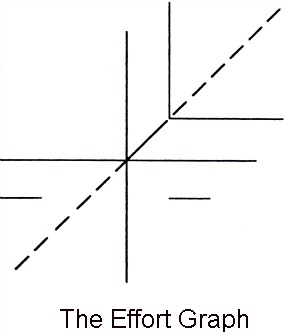
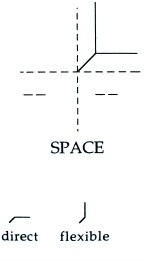 Space
Space
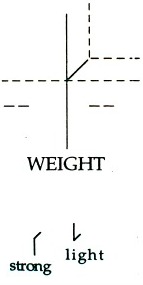 Weight
Weight
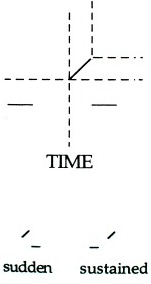 Time
Time
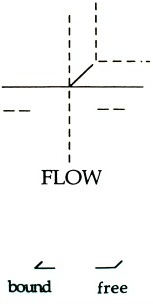 Flow
Flow